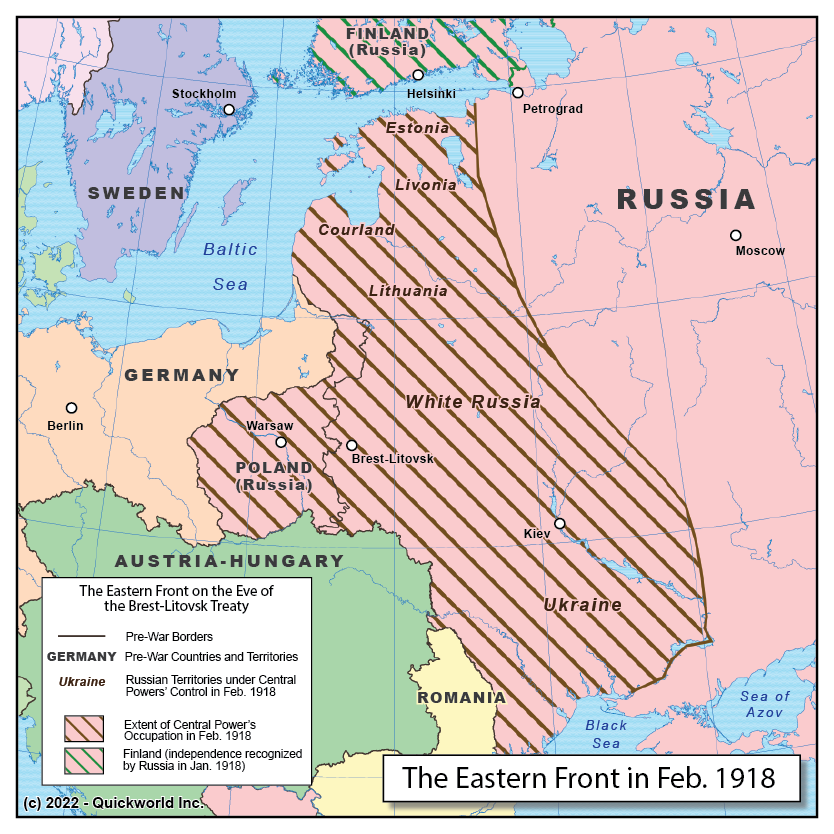Our Series on World War One takes us to Eastern Europe, showing the Eastern Front as it was by the end of the war.
While the German Empire had made early inroads towards Russia, occupying most of Poland and part of the Baltic lands, the Russian Revolution created a vacuum in military command and let Germany make serious advance eastward, capturing most of what is today Belarus, Ukraine and Moldova.
The Treaty signed at Brest-Litovsk on March 3, 1918 puts an end to hostilities and recognized de facto the independence of Poland, Ukraine and Byelorussia, as well as the fall of the Baltic States into the German sphere of influence.
The Treaty allowed Germany to shift its troops to the Western front, but it was too late: the arrival of American troops tilted the balance of power in favour of the Entente and Germany was forced to surrender in November 1918. With the Bolsheviks denouncing the treaty and Poland being disappointed by its territorial limitations, Eastern Europe would plunge into three more years of bloody conflict where Ukraine and Byelorussia would be integrated into the Russian-led Union of Soviet Socialist Republics.
The consequences of these conflicts can be felt well into the Twenty-First Century
The Eastern Front in 1918


